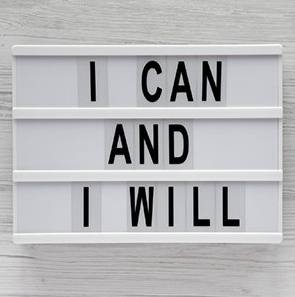Guide to Resetting Your Routine

Follow these steps to reset your routine and meet your goals
When was the last time you asked yourself – how am I spending my time? Could my daily routine use a refresh or even a restart button? We checked in with our Medical Director of Occupational Health and Medicine Darryl Lesoski, MD, MPH to create this "recipe" to help you reset your daily habits and weekly routines.
Take inventory

When reflecting on the past year and looking to make some changes, a great place to start is by evaluating how you’ve been feeling on a day-to-day basis, reflecting on your values, and paying attention to how you are spending your time.
“A healthy routine is 24/7, Dr. Lesoski said. “Look at all aspects of your life when doing this exercise and pay attention to how you are currently spending your time.”
Each of the below categories represents values that are important to a well-balanced life. Take a moment to think about how you are spending time right now. Answer the questions in your guide as honestly as possible – try not to judge your answers.
| Value Categories | Reflection Questions |
|---|---|
| Family | How much time do I spend with my family? What kinds of outings, trips, and activities do we all enjoy doing together? |
| Social | How much time do I spend with my significant other or dating? Am I dedicated to spending time with friends? |
| Individual | Do I have dedicated time to spend alone? What activities do I enjoy doing by myself? |
| Work | Am I spending an appropriate amount of time at work or thinking about work? Do I find myself distracted by thoughts of my work when doing other things? |
| Play | Am I allocating time to play games/work on hobbies/do things just for fun? What hobbies and recreational activities do I enjoy most? |
| Mental Health and Wellbeing | Do I make time to take breaks from work? How much of my time is spent in front of a computer, phone, or TV screen? Do I have a set time for meditation or prayer? |
| Physical Health | Do I have a set time for exercise? Am I getting routine screenings/making time to get check-ups? Am I up-to-date on immunizations? |

Now that you’ve had some time to think about what you value, it’s time to take inventory of how your time in one week is actually spent.
“When thinking about making a change in your diet, you’d start with a food log. It’s important to track your time the same way,” Dr. Lesoski said. “Gaining a really good understanding of how your time is spent can lead to some great ‘aha’ moments.”
Follow along in the time log step of your toolkit to take inventory of your time.
Gather your ingredients
Now that you have a better understanding of how you are spending your time now, you are in a better position to gather the ingredients you will need to set realistic and healthy goals for making a change. Ask yourself – which of these value categories is important to me? Where do I wish I had more time to spend? Where do I wish I was spending less time? Record your answers in your toolkit.
Prepare goals
“Setting goals is important but try not to feel overwhelmed if you aren’t always hitting the mark,” Dr. Lesoski explained. “Goals should challenge you yet be attainable and realistic. Setting goals should lead to long-term visions and short-term motivation.”

Setting attainable goals is critical for success. For example, if you’re not currently exercising, avoid setting a goal of working out for 60 minutes per day. Try starting small and building from there. Setting a weekly goal to walk for 10 minutes each day 3 times per week is a great place to start. Once you’ve achieved this goal, increase your distance, time, or days per week.
Another way to set realistic goals is to reflect on what you’ve been successful doing in the past. If you’ve tried a goal before and it didn’t become a habit, try taking another approach. For example, if you’ve tried going to the gym at 5am every morning, but couldn’t make it stick, then try something different. There is no one size fits all and your interests and ability to engage different goals over time will change.
Example of daily goals:
- If you prioritize your physical health: Set aside 30 minutes per day for exercise/physical activity. This can be whatever you enjoy doing – hiking, walking, biking, yoga – it all counts!
- If you prioritize mental health and wellbeing: Spend some time each day quietly meditating, journaling or praying. Even if you are not religious or spiritual, spending some time alone and away from distractions and noise is a great thing to do for your mental health. You could also use this time to go through the Resiliency Toolkit.
Example of weekly goals:
-
If you prioritize family time: Set aside one night per week as a no-phones-allowed family dinner or game night. You can also set an afternoon aside for a fun weekend family outing to your favorite park, hiking trail, or hot chocolate place.
- If you prioritize time with your significant other: Plan a date night one day per week away from kids, phones, and other distractions, like cooking a romantic meal or watching a movie together.
- If you prioritize play: Make it a goal to spend one evening per week doing something you enjoy, like biking, playing an online or card game with friends.
Take some time to reflect on your goals and write them down in your guide.
Fold in your schedule
Now that you have established your goals, how can you fit everything in?
“We all need time with our significant other, with our families, time for work, and time alone,” Dr. Lesoski shared. “It’s hard to make sure all of this happens if we don’t schedule this time. When kids are introduced, the parents’ routines are often left behind. This makes it so much more important to find time to balance all aspects of your life.”
- Sprinkle in your intentions. Start by choosing one day per week to sit down and create your intentions for the week. This could be a Sunday night habit you practice alone, with a significant other, or with your family to list out obligations and priorities for the week.
- Add your work obligations. Because we spend so much time working, this is a great place to look at first. Write down the time you plan to dedicate to work on your calendar.
- Pour in appointments. Take a moment to review your scheduled obligations for the week. This could be doctor’s appointments, dinners with friends, a child’s sporting event, etc. Recording these obligations will help reduce the stress of feeling like you’re missing something and let you know how much time leftover you have available to rest and complete your goals.
Grate in your goals.
Look back at the top goals you set and decide when you would like to spend time working toward them.
Carve out your daily routine
Now that you have a great idea of what your week looks like, it’s a good time to think about your daily goals. This will help you create your ideal, yet realistic routine. Start with what time you want to begin your day! A good rule of thumb is to shoot for 8 hours of sleep per night, so choosing wake-up and bedtime is important.
Many of us start our days by heading straight for work, but this doesn’t always have to be the case. Carving out time in the morning before work is a great opportunity to set aside time to meet one – or more – of your daily goals. The morning is a great time to have quiet time to meditate or get 30 minutes of exercise before you head to work.
Preheat that motivation
“The biggest battle is getting there. Once you get dressed to exercise, you’ve already done the hardest part,” Dr. Lesoski said.
Having an accountability buddy or group can help you stay on track. Creating a community around fun activities that help you meet your goals is important – and you can knock out more than one of your goals at a time! Your community could be anything that works for you. Some examples include a virtual yoga class, cross country ski group, or walking club.
Dr. Lesoski also recommends finding a mantra to help you stay motivated. This can be any short saying or phrase to help center you and focus on meeting your goals. For example, I can and I will. These tips will help you stay motivated throughout January and beyond.
Measure your progress

You’ve got your goals and you’ve made time to complete them – now all that’s left is to get to work! Take a moment to celebrate when you check an item off your list for the day. Try not to beat yourself up over missing a workout or running out of time to meet all your goals. Instead, start again fresh the next day.
Take some time about every 3 months to complete the toolkit again. It’s helpful to see how far you’ve come to help you stay motivated. Remember, wellness is a journey and something to take small steps toward each day. Just as your needs evolve, your goals and routine should too.
Committed to You
At Munson Healthcare, we are here for your mental health and wellbeing. In addition to this guide, we have tools available to you for finding a provider, building resilience, and keeping you in the know on important health topics.

